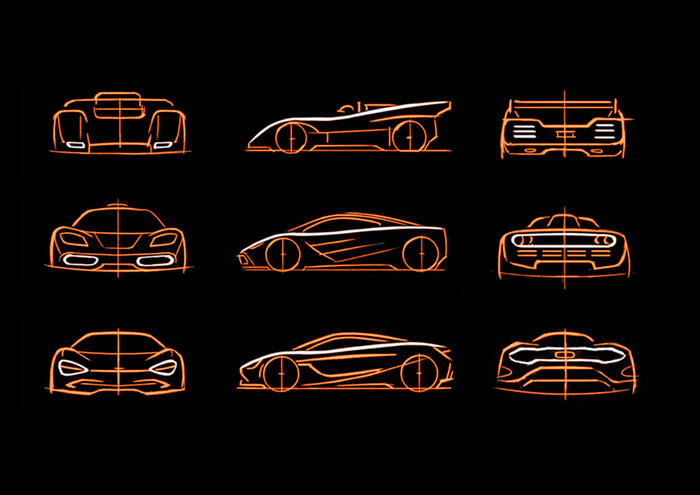McLaren Automotive has revealed the design philosophy that will underpin its next generation of supercars and hypercars. And which starts from a strong inspiration from the 60 years of sporting tradition of the brand which - it should be remembered - was created in 1963 by the famous New Zealand driver and engineer Bruce McLaren, with the debut of the M1B in 1964. "Racing is in our DNA - he said Tobias Sühlmann, chief design officer of McLaren Automotive when announcing the program - and beauty comes from this relentless pursuit of performance."
"We are deeply inspired by McLaren's sixty-year history. But we are not stuck in our past. It will be our design DNA that transforms McLaren into a brand that offers 60 years of motorsport heritage with incredible 'lightweight' supercars and not only that. It's the beginning of a new era, with new vehicles, greater product differentiation and with Performance by Design at the center of everything." The next era of McLaren design will be defined by five fundamental principles, on which the aesthetic foundations of the next generation products will be based. They are Epic Design that leverages the sensorial emotion resulting from the overall concept of the vehicle and its appearance. Definitely influenced by the aerodynamics and surfaces of Formula 1, Can-Am and GT cars.
Above all, the revolutionary central seating position of the McLaren F1 road car stands out. But examples are the fighter jet-style sliding roof of the Solus GT and the four-outlet all-titanium exhaust system of the 765LT. Through the Athletic Design definition, the upcoming models will enhance the extraordinary level of performance and agility of each McLaren: The compact and muscular body promotes overall performance through maximum aerodynamic efficiency and weight savings. It is - specifies Sühlmann - an "efficient packaging of the components of the powertrain and chassis. With volumes formed 'under vacuum' to arrive at a bodywork without superfluous masses",
The third pillar of this strategy is Functional Design which is directly inspired by the principles of athleticism and performance where everything in the car exists for a precise reason. This is the case of innovative approaches towards advanced aerodynamics, as in the McLaren Senna and the McLaren P1. Or even with solutions aimed at cooling, as in the new Artura Spider and the McLaren 750S. The focus phase - i.e. the Focused Design - is as integral a part as the epic appearance and the super-light aerodynamic engineering that guarantees the performance. It is identified with performance-oriented ergonomics, with the optimal driving position, with unparalleled visibility. And also with a correct mix of analog and digital information flows. After all - recalls Sühlmann - everything the driver touches, sees and hears helps to maximize the driving experience and vehicle performance. Finally, the Intelligent approach to the design of McLarens, vehicles engineered, designed and finished with innovative and lightweight materials.
Which due to their lightness, resistance and greater durability can expand their roles. A sketch provided by MacLaren details key design elements inspired by McLaren's rich history in motorsport and dedication to cutting-edge, high-performance engineering. Features that at the front are defined by two main symmetrical elements with a horizontal orientation and a low nose. The signature of the side design of future McLaren models will be the Performance Line, a shoulder line inspired by the profiles of the legendary McLaren Can-Am, McLaren F1 and McLaren P1.
In the rear view the design signature is defined by an open back end – a design trait pioneered by F1 and widely interpreted across all modern McLaren supercars – which brings with it the functionality of increased heat dissipation. The straight-line graphics and horizontal orientation of the design elements create a greater sense of width and lower height of the vehicle, for robust, race car-like proportions.
Reproduction reserved © Copyright ANSA

